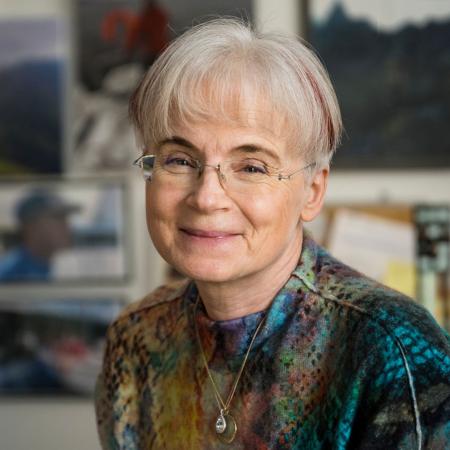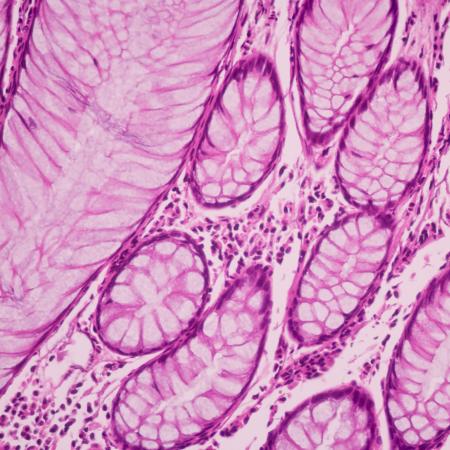Note: this article is part of a series on the distinguished tradition of scientific research pertaining to ocean and space to mark the occasion of Oregon State's 150th anniversary. Read more: Oregon State Science The many "firsts" in 150 years, On the shoulders of giants, The significance of OSU's sea-, space-, sun- and land-grant designations.
Mathematics and science have been at the heart of Oregon State University since its designation as a land-grant college in 1868. Early records show that a liberal arts curriculum at OSU (then Corvallis College) included three years of mathematics along with a rigorous course of study in Latin and Greek.
Mathematician Joseph Emery was one of three faculty in the first decade of the College’s existence. Today, mathematics, physics, chemistry, biology and other fundamental sciences contribute to some of the most innovative and advanced centers of research and programs at OSU. The sphere of influence that fundamental science wields at the university is vast. It permeates and shapes every discipline from agriculture to oceanography, atmospheric sciences, business and engineering while creating a blueprint for the future.
Science at OSU has always been a trailblazer. Corvallis College was one of three land-grant institutions in the nation to offer scientific courses to women in 1890. In 1941, Chung Kwai Lui, a student from China, received a Ph.D. in physics becoming the first woman to earn a doctorate at OSU. In this issue, we focus on OSU’s space and sea grants; in our spring issue, we take an in-depth look at our contributions to OSU’s sun and land grants.
Sea: Ocean research
Programs in biological and quantitative sciences have shaped a half-century of marine science research at OSU and continue to define the present and future of research on ocean ecosystems.
Distinguished Professor and marine biologist Jane Lubchenco served as the first U.S. Science Envoy for the Ocean for the U.S. Department of State and as Administrator of the National Oceanic and Atmospheric Administration from 2009-13. She was nominated by President Obama for his “Science Dream Team.” Her seminal contributions to research in marine ecology for the last 30 years have played a key role in the growth of marine sciences at OSU. Lubchenco is Advisor to OSU’s Marine Studies Initiative, a multi-million dollar “transdisciplinary education, research and outreach program that explores all facets of the marine environment.”
Our scientists have a global and large-scale environmental impact through their research on critical challenges posed by climate change to ocean ecosystems. Ocean ecologist Bruce Menge’s research group plays a lead role in the multi-university Partnership for Interdisciplinary Studies of Coastal Oceans, pioneering research on the impact of ocean acidification on coastal communities. The latter has led to globally recognized programs in environmental sciences and conservation biology.
Our marine scientists have made important discoveries that have been widely communicated to the public and the government about immediate crises faced by ocean systems resulting in important legislative measures.
Marine ecologist Francis Chan offers a leading new voice in ocean advocacy. His recent study on the threat to marine organisms from hypoxia or low oxygen in near shore Pacific Ocean waters is waking up the public to the perils of low oxygen in water. The Oregon legislature has recognized the threat and established an ocean acidification and hypoxia council.
Our microbiologists and biologists study diseases in aquatic animals ranging from corals and sea stars to salmon, examine the marine microbiome to understand carbon cycling and cloud formation and investigate how warming waters affect marine ecosystems across the West Coast. Mathematicians and statisticians employ environmental big data, modeling and data visualization to understand extreme weather events, design marine protected areas and track the effects of a warming climate in oceans.
Using environmental big data to understand space
OSU Physics has been a formidable presence since its founding in 1908 with the hire of Willibald Weniger as assistant professor of physics. Physics faculty, students and alumni have not only contributed to the currents of modern research in 20th- and 21st-century physics, but have also brought these innovations and exciting global developments to our campus and the state of Oregon. A wireless telegraphy radio course led to the creation of the first wireless radio station on campus by physicist Jacob Jordan in 1922. The first seismograph station was built by a physicist in 1950 and was turned over to the Department of Oceanography in the 1960s to develop a program in seismology.
After a 1939 Nobel Prize made the cyclotron (particle accelerator) popular, the Physics Department gave the state its first cyclotron in 1954 under the guidance of then-Chair Edwin Yunker. Physics alumna Chung Kwai Lui (Ph.D.) was selected to be part of the Manhattan Project during World War II to purify large quantities of uranium necessary for developing the atomic bomb.
A turning point for aerospace research and education arrived in 1991 when OSU joined the NASA Space Grant Consortium and became home to the Oregon Space Grant Consortium (OSGC). OSGC’s mission is “to implement a balanced program of research, education and public service” and support educational programs in space science and STEM from middle school through graduate school.
Randall Milstein, who teaches astronomy courses at OSU, is an OSGC Astronomer-in-Residence. An expert on the history and science of solar eclipses, Milstein played a leading role in public outreach on the recent solar eclipse, presenting public talks on the cultural significance and history, viewing safety and the physics of the solar eclipse. In his role with the NASA Space Grant, Milstein advised students how to monitor and record the eclipse through high-altitude balloons. (Read: An amazing moment in time: A year of planning for the solar eclipse pays off.)
One of this century’s greatest physics discoveries—gravitational waves—has an OSU connection. Alumnus Shane Larson (’91), associate professor of astrophysics at Northwestern University, is part of an international team of 1,000 scientists working on the Laser Interferometer Gravitational-Wave Observatory (LIGO) that discovered gravitational waves in 2016 and the first-ever detected neutron stars merger in 2017. (Read: Physics alumnus involved in historic astrophysics discoveries.)
This summer, a month before international scientists announced a game-changing detection of a short gamma-ray burst, OSU theoretical astrophysicist David Lazzati and his team predicted the discovery. In a paper published in the journal, Monthly Notices of the Royal Astronomical Society, they challenged previous calculations that short gamma-ray bursts associated with gravitational emission of binary neutron star coalescence could be detected whether or not they pointed toward Earth. It’s a lucky set of circumstances for a theorist, when you have a working theory to make predictions and new instruments to test them, says Lazzati.
“A simultaneous detection of gamma rays and gravitational waves from the same place in the sky is a major milestone in our understanding of the universe,” said Lazzati, a theoretical astrophysicist in the Department of Physics. “The gamma rays allow for a precise localization of where the gravitational waves are coming from, and the combined information from gravitational and electromagnetic radiation allows scientists to probe the binary neutron star system that’s responsible in unprecedented ways. We can tell things like which galaxy the waves come from, if there are other stars nearby, and whether or not the waves are followed by visible radiation after a few hours or days.” (Read: Gamma-ray burst detection just what OSU physicist predicted.)
From winning the first Rhodes scholarship at OSU to pioneering research in bacteriology, quantum chemistry and climate science, Oregon State scientists, students and alumni have made a global impact and changed our world for the better for generations to come.
Read more: Find out what it means for OSU to have Land-,Sea-, Space- and Sun-Grant designations.
Science at OSU can proudly lay claim to many "firsts" in its 150-year history.
The College of Science shines a light on some of the giants who have made ground-breaking contributions to the scientific enterprise.




